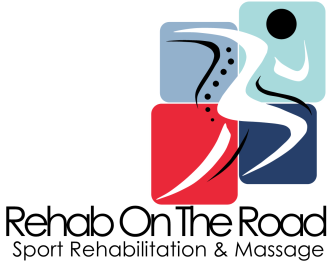A Calf strain is simply a tear of one of the muscles which make up the calf muscle group at the back of the lower leg.
Symptoms of a calf strain vary significantly depending on how bad your injury is.
A mild strain may feel more like an ache during or after exercise.
With a more severe strain, you will feel a sudden sharp pain at the back of the lower leg at the time of injury.
Calf muscle strains are graded from 1 to 3, with grade 3 being the most severe
Anatomy

The calf muscle, on the back of the lower leg, is actually made up of two muscles:The gastrocnemius is the larger calf muscle, forming the bulge visible beneath the skin. The gastrocnemius has two parts or “heads,” which together create its diamond shape.
The soleus is a smaller, flat muscle that lies underneath the gastrocnemius muscle.The gastrocnemius and soleus muscles taper and merge at the base of the calf muscle. Tough connective tissue at the bottom of the calf muscle merges with the Achilles tendon. The Achilles tendon inserts into the heel bone (calcaneus).
During walking, running, or jumping, the calf muscle pulls the heel up to allow forward movement.Both muscles contract to produce ‘plantar flexion’ at the ankle joint. This is the same movement as standing up onto your tip-toes.
Causes
Calf muscle strains usually occur either as a result of a sudden, pushing off movement, or from excessive and forced over-stretching of the muscles.Factors which increase the chances of sustaining a torn calf muscle.
Not warming up properly.
Tight calf muscles
Wearing high heels regularly
The muscles adaptively shorten over time and as a result, are strengthened in a contracted state. When wearing flat running shoes they over-stretch, increasing the risk of a torn muscle.
Acute Treatment
In the early acute stage complete rest is important at least until you can walk pain free. Once the acute phase has passed then active rest may be more benefitial than complete rest. There is evidence to support the theory that muscles heal with some stress, but this must be controlled
Exercises
Both stretching and strengthening exercises are important for calf injuries. Exercises should only begin after the acute stage of healing has passed and always be performed pain-free.
Active calf stretches are recommended once the early stages of recovery have been completed. They involve moving your foot yourself to stretch the muscles.
As your muscle heals, static stretches should be done with the leg both straight and bent to target both the gastrocnemius and soleus muscles.
Strengthening exercises can also begin as soon as pain allows. Plantar flexion with a resistance band is a gentle exercise, to begin with, along with seated calf raises.
Eventually, more dynamic, functional exercises bridge the gap between basic rehab exercises and full fitness.



Contact Me
Let's chat!
Need more information? Send me an email or drop me a line. I don’t bite!
- Charlotte@rehabontheroad.co.uk
- 07971448719

